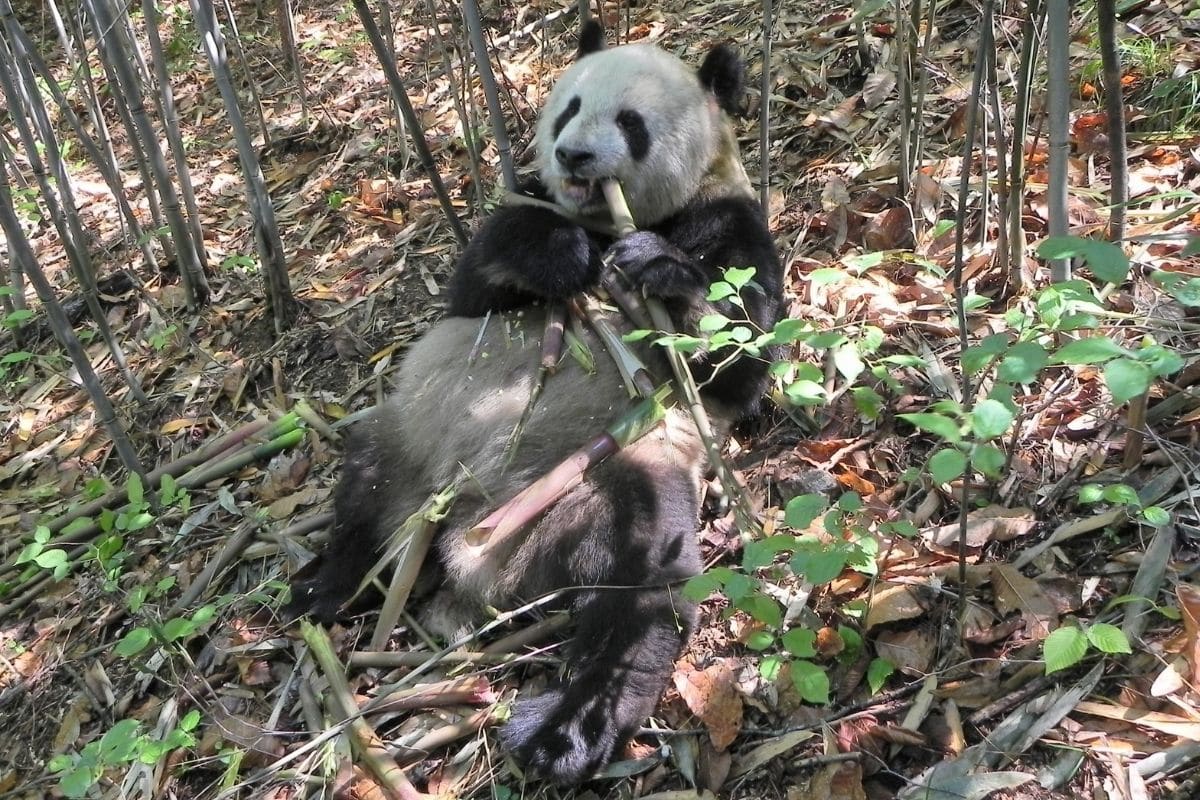
The remarkable experiment supports what researchers already suspected: it’s all in the gut bacteria.
The giant panda actually only eats bamboo. And with that, it maintains a high-fiber, but very low-fat diet. Remarkably enough, the panda cannot be seen; most giant pandas are downright chubby. How is that possible? A new study, published in the magazine Cell Reports, creates clarity.
intestinal flora
Although the panda only eats bamboo, that does not mean that it also eats the same continuously all year round. For about four months of the year, giant pandas feast on bamboo shoots: bamboo shoots that are relatively rich in carbohydrates and proteins. But for the other eight months of the year, the pandas have to make do with the fiber-rich and low-nutrient leaves of the bamboo plant. And yet the pandas manage to remain plump and healthy all year round. It can all be traced back to a change in their gut flora, researchers are now showing.
poo transplant
“We’ve known for a long time that these pandas harbor a different set of gut bacteria during the bamboo shoot season, and it’s also clear that they are extra plump at that time of year,” said researcher Guangping Huang. But it was unclear whether those gut bacteria had anything to do with it. To find out, the researchers collected poop from wild giant pandas that mainly ate bamboo shoots. And a few months later, poo from pandas that had to make do with bamboo leaves was also collected. Subsequently, the feces – containing the panda’s gut bacteria – were then transplanted into the guts of mice that had been cleaned of bacteria. The mice were then presented with bamboo for three weeks. After those three weeks, the researchers had to conclude that the mice that had received the poop from a bamboo shoot-eating panda were much heavier and had a higher fat percentage than the mice that had received the poop from bamboo-leaf-eating pandas. And that despite the fact that both groups of mice had consumed exactly the same amounts and the same type of food.
bacteria
It strongly indicated that the remarkable difference in weight and size of the mice was dictated by the gut bacteria. Follow-up research supports this. An analysis of panda poo, for example, shows that it is much richer in intestinal bacteria during the months in which bamboo shoots are available. Clostridium butyricum. And the metabolic product of that bacterium gives a boost to the gene that ultimately promotes the construction and storage of fat.
As a result, the panda – thanks to that change in its gut flora – becomes quite plump during the four-month period during which bamboo shoots are available. “It is the first time that we have found a causal relationship between a panda’s gut flora and its phenotype (the sum of all observable traits, ed.),” said Huang. And those extra reserves then make up for the lack of nutrients that the giant panda faces in the following eight months, when only few nutritious bamboo leaves are available. And so the giant panda – despite the fact that nutritious food is not available all year round – can still remain healthy and even reasonably plump.
The panda is by no means the only organism that has a seasonal intestinal flora; there are more animals whose gut bacteria change over the course of the year. For example, there are different types of monkeys that have a different set of gut bacteria in the summer – when there is a lot of fruit and fresh leaves available – than in the winter – when they mainly rely on the bark of trees. We also see a comparable change in intestinal flora in the Hadza, modern hunters and gatherers who live in Tanzania and who also consume different types of food depending on the season.
Research into the gut flora of giant pandas would have been unimaginable without the mice, Huang emphasizes. “When it comes to endangered and vulnerable wild animals, we can’t experiment with them directly.” Thanks to the mice and faecal transplants, the researchers hope to learn much more about the gut flora of giant pandas (and other wild animals) in the near future. In this way, the scientists hope in the short term to identify more microorganisms in the guts of giant pandas and to clarify how they influence the health of pandas. “It’s important to determine which bacteria are good for the animals because it may one day allow us to treat some diseases with the help of probiotics,” Huang said.
Source material:
“A giant panda’s gut bacteria help it remain chubby while on a bamboo diet– Cell Press (via Eurekalert)
Image at the top of this article: Fuwen Wei